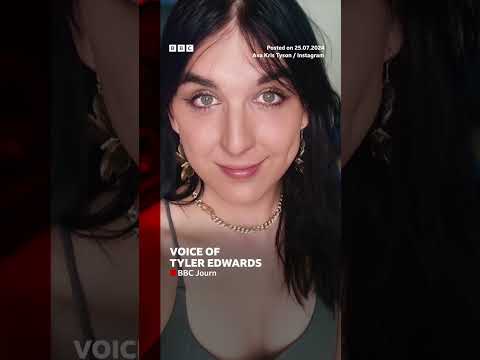(11 Dec 2024)
RESTRICTION SUMMARY:
ASSOCIATED PRESS
Damascus, Syria – 11 December 2024
1. Relatives gathering outside morgue where pictures of victims are pinned on wall
2. SOUNDBITE (Arabic) Dr. Abdallah Youssef, forensic doctor:
"35 bodies arrived from Harasta Hospital. Some have been identified, others remain unknown. We took samples to analyze them, but that will take some time."
3. Bodies in morgue
4. SOUNDBITE (Arabic) Dr. Abdallah Youssef, forensic doctor:
++STARTS ON PREVIOUS SHOT++
"The bodies were in salt rooms at very low temperatures. We cannot identify the date of death until we finish all the tests. There are some torture marks, some signs of surgical operations, but we cannot determine yet if organs were stolen. There were bullet holes in some bodies, they could be from field executions."
5. Woman crying
6. SOUNDBITE (Arabic) Hlala Merei, Palestinian refugee in Syria:
++PARTIALLY OVERLAID BY SHOTS 7-8++
"I lost my sons in 2013. I’ve been submitting requests to the military police and the military court, but they kept telling me they don’t have them. Since 2013, I have not seen them, nor do I know their fate. Bring back my sons."
7. Man checking bodies
8. Families outside morgue
STORYLINE:
Dozens of relatives gathered at a morgue in Damascus on Wednesday, anxiously awaiting news about their loved ones who were imprisoned or killed by the security apparatus of the toppled Syrian government.
On the morgue’s wall outside, pictures of some of the dead were pinned so their relatives can identify them, as many remain unknown.
"35 bodies arrived from Harasta Hospital. Some have been identified, others remain unknown. We took samples to analyze them, but that will take some time," said Dr. Abdallah Youssef, a forensic specialist.
Thousands were found in Syrian detention centers and prisons since the fall of Assad.
Where some have died just weeks ago, others perished months earlier.
Syrians across the world are now circulating images of dead and tortured bodies in the grim hope of seeing the bodies of their slain loved ones.
Inside the morgue in Damascus, Mohammad Chaeeb spoke softly into his phone, telling a relative the news: he’d found his brother there.
His gaze lingered on the blackened body of his brother, Sami Chaeeb. Sami’s teeth were bared, his eye sockets empty.
“It looks like they used gas on him or something, I don’t know. He doesn’t look normal. He doesn’t even have eyes,” he said while talking on the phone.
Sami was put in jail five months ago, disappearing into a dark prison system under the rule of President Bashar al-Assad, whose regime fell over the weekend. The family never knew why Sami had been imprisoned.
Some bodies came from the notorious Saydnaya Prison, still dressed in their prisoner uniforms, said Yasser Qasser, a medical forensic assistant at the morgue.
His colleague, Dr. Abdallah Youssef, said they’ve seen some torture and bullet marks on some of the bodies, and identifying all of them would take time.
An estimated 150,000 people have been detained or have gone missing in Syria since 2011 — under Assad’s rule, any whiff of dissent could send someone immediately to prison.
For years, it was a sentence akin to death, as few ever emerged from the system.
Some families continued to search the morgue. They moved among the bodies, weeping quietly as they passed, pausing to search for familiar features.
The bodies lay covered in white shrouds, each marked with a number—some bearing the label “unknown.”
AP Video shot by Omar Albam and Gaith AlSayed
Find out more about AP Archive: http://www.aparchive.com/HowWeWork
Twitter: https://twitter.com/AP_Archive
Facebook: https://www.facebook.com/APArchives
Instagram: https://www.instagram.com/APNews/
You can license this story through AP Archive: http://www.aparchive.com/metadata/youtube/18c243fb51664e4c87e32e8a15fcca88
Author: AP Archive
Go to Source
News post in December 16, 2024, 6:05 pm.
Visit Our Sponsor’s:
News Post In – News





